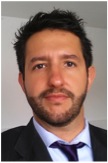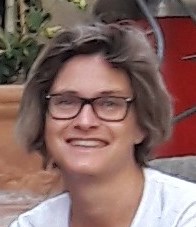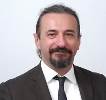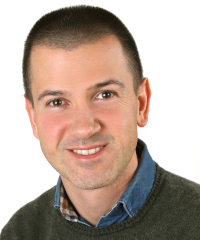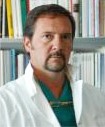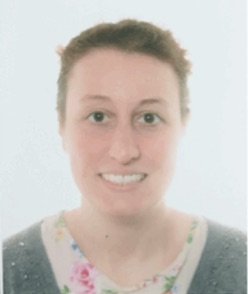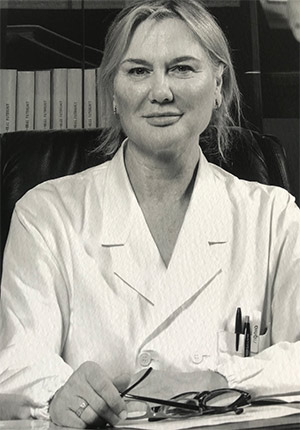Studying at the University of Verona
Here you can find information on the organisational aspects of the Programme, lecture timetables, learning activities and useful contact details for your time at the University, from enrolment to graduation.
Academic calendar
The academic calendar shows the deadlines and scheduled events that are relevant to students, teaching and technical-administrative staff of the University. Public holidays and University closures are also indicated. The academic year normally begins on 1 October each year and ends on 30 September of the following year.
Course calendar
The Academic Calendar sets out the degree programme lecture and exam timetables, as well as the relevant university closure dates..
| Period | From | To |
|---|---|---|
| Lezioni 1 Anno1 semestre CLID VR | Oct 5, 2020 | Dec 4, 2020 |
| Lezioni 2 Anno1 semestre CLID VR | Oct 5, 2020 | Nov 27, 2020 |
| Lezioni 3 Anno 1 semestre CLID VR | Oct 5, 2020 | Nov 20, 2020 |
| Lezioni 2 Anno 2 semestre CLID VR | Mar 1, 2021 | May 7, 2021 |
| Lezioni 1 Anno 2 semestre CLID VR | Mar 8, 2021 | May 14, 2021 |
| Lezioni 3 Anno 2 semestre CLID VR | Apr 12, 2021 | May 28, 2021 |
| Session | From | To |
|---|---|---|
| Sessione Invernale 1 anno | Jan 11, 2021 | Feb 2, 2021 |
| Sessione Invernale 3 anno | Jan 11, 2021 | Feb 26, 2021 |
| Sessione Invernale 2 anno | Jan 11, 2021 | Jan 29, 2021 |
| Sessione estiva 3° anno | Jun 7, 2021 | Jul 9, 2021 |
| Sessione estiva 1° anno | Jun 21, 2021 | Jul 30, 2021 |
| Sessione estiva 2° anno | Jul 5, 2021 | Jul 30, 2021 |
| Sessione Autunnale 1 - 2 - 3 anno | Sep 1, 2021 | Sep 30, 2021 |
| Session | From | To |
|---|---|---|
| Sessione di Laurea Autunnale 2020/2021 CLID VR | Oct 1, 2021 | Nov 30, 2021 |
| Sessione di Laurea Primaverile 2020/2021 CLID VR | Mar 1, 2022 | Apr 30, 2022 |
| Description | Period | From | To |
|---|---|---|---|
| Tirocinio 2 anno - 3 1 Periodo CLID VR | Tirocinio 2 anno - 3 1 Periodo CLID VR | Nov 23, 2020 | Dec 18, 2020 |
| Tirocinio 2 anno - 2 Periodo CLID VR | Tirocinio 2 anno - 2 Periodo CLID VR | Feb 1, 2021 | Feb 26, 2021 |
| Tirocinio 1 anno -1 Periodo CLID VR | Tirocinio 1 anno -1 Periodo CLID VR | Feb 8, 2021 | Mar 5, 2021 |
| Tirocinio 2 anno - 3 2 Periodo CLID VR | Tirocinio 2 anno - 3 2 Periodo CLID VR | Mar 1, 2021 | Apr 9, 2021 |
| Tirocinio 1 anno - 2 Periodo CLID VR | Tirocinio 1 anno - 2 Periodo CLID VR | May 17, 2021 | Jun 18, 2021 |
| Tirocinio 2 anno - 3 3 Periodo CLID VR | Tirocinio 2 anno - 3 3 Periodo CLID VR | Jun 14, 2021 | Jul 23, 2021 |
| Tirocinio 2 anno - 3 Periodo CLID VR | Tirocinio 2 anno - 3 Periodo CLID VR | Sep 6, 2021 | Sep 24, 2021 |
| Tirocinio 2 anno - 3 4 Periodo CLID VR | Tirocinio 2 anno - 3 4 Periodo CLID VR | Sep 6, 2021 | Sep 24, 2021 |
| Tirocinio 1 anno - 3 Periodo CLID VR | Tirocinio 1 anno - 3 Periodo CLID VR | Sep 13, 2021 | Sep 24, 2021 |
| Tirocinio 2 anno -1 Periodo CLID VR | Tirocinio 2 anno -1 Periodo CLID VR | Nov 30, 2021 | Dec 12, 2020 |
Exam calendar
Exam dates and rounds are managed by the relevant Medicine Teaching and Student Services Unit.
To view all the exam sessions available, please use the Exam dashboard on ESSE3.
If you forgot your login details or have problems logging in, please contact the relevant IT HelpDesk, or check the login details recovery web page.
Should you have any doubts or questions, please check the Enrollment FAQs
Academic staff
 elisa.artegiani@univr.it
elisa.artegiani@univr.it
 giacomosebastiano.canova@univr.it
giacomosebastiano.canova@univr.it
 nicolo.cardobi@univr.it
nicolo.cardobi@univr.it
 pietro.liboni@univr.it
pietro.liboni@univr.it
 anja.meyer@univr.it
anja.meyer@univr.it
 maria.murgia@aovr.veneto.it
maria.murgia@aovr.veneto.it
 alessia.pardo@univr.it
alessia.pardo@univr.it
 elda.righi@univr.it
elda.righi@univr.it
 annarita.signoriello@univr.it
annarita.signoriello@univr.it
 ROMINA.VITA@libero.it
ROMINA.VITA@libero.it
 marghe.viviani@gmail.com
marghe.viviani@gmail.com
Study Plan
The Study Plan includes all modules, teaching and learning activities that each student will need to undertake during their time at the University.
Please select your Study Plan based on your enrollment year.
1° Year
| Modules | Credits | TAF | SSD |
|---|
2° Year activated in the A.Y. 2021/2022
| Modules | Credits | TAF | SSD |
|---|
3° Year activated in the A.Y. 2022/2023
| Modules | Credits | TAF | SSD |
|---|
| Modules | Credits | TAF | SSD |
|---|
| Modules | Credits | TAF | SSD |
|---|
| Modules | Credits | TAF | SSD |
|---|
Legend | Type of training activity (TTA)
TAF (Type of Educational Activity) All courses and activities are classified into different types of educational activities, indicated by a letter.
Biomolecular fondamentals of life (2020/2021)
The teaching is organized as follows:
Learning outcomes
Teaching aims to provide knowledge of human biology in an evolutionary vision with particular reference to the molecular and cellular processes common to all living organisms, to raise awareness of the structures and functions of biological macromolecules and the main metabolic pathways in which they are involved. The student should be able to explain the cellular mechanisms underlying the functioning of the whole organism and grasp the pathogenic meaning of any alterations of them; it should also be able to recognize the different ways in which Mendelian characters are transmitted in humans and finally stimulate the student's interest in biomolecular sciences by giving maximum emphasis to the interconnections between biochemical processes and the energy variations associated with them. BIOCHEMICAL MODULE Training objectives: The course aims to present the relationship between the structure and function of biological macromolecoly and the main metabolic pathways in which they are involved. The key objective is to stimulate the student's interest in biomolecular sciences by giving maximum prominence to the interconnections between biochemical processes and the energy variations associated with them. At the end of the teaching, the student/student will have to demonstrate that they have acquired terminology and useful knowledge for a critical analysis of vital biochemical processes in order to achieve autonomy of critical and comprehensive evaluation of the processes themselves. APPLIED BIOLOGY MODULE Training objective: Providing knowledge of human biology in an evolutionary vision with particular reference to the molecular and cellular processes common to all living organisms. Provide knowledge about the mutagenic action of chemical and physical agents. Provide knowledge about the transmission of hereditary characters. The student should be able to explain the cellular mechanisms underlying the functioning of the whole organism and grasp the pathogenic meaning of any alterations of them; it must also be able to recognize the different ways in which Mendelian characters are transmitted in humans. At the end of the lesson, the student will have to demonstrate that he has acquired the basic knowledge of the mechanisms that govern life and cell reproduction, the interactions between cells, between organisms and between organisms and the environment. It will also need to demonstrate that it has acquired knowledge about the mechanisms of transmission of hereditary characters and will have to be able to recognise how genetic diseases are transmitted in humans, particularly those relating to tooth development and structure. These basic knowledges are a pre-requisite for further specialist insights that will be the subject of the lessons of the following years of course.
Program
- Building blocks of the biological matter: the polymeric structure of biological macromolecules.
The carbon atom, electronic configuration and hybridization states . Classification of organic compounds and functional groups; hydrocarbons; alcohols; thiols; amines; Aldehydes and ketones; Carboxylic acids; Esters and anhydrides. The oxidation state of organic compounds.
- Protein structure and function: structure and physicochemical properties of amino acids. The peptide bond. Protein structure levels; Fibrous protein; Globular proteins. Hemoglobin and myoglobin: structure, function, factors that influence the oxygen bond, hemoglobin variants. Enzymes: reaction rate, enzymatic catalysis; Coenzymes and cofactors; Water-soluble vitamins; Regulation of enzymatic activity.
- Introduction to metabolism. Metabolic pathways, anabolism and catabolism. The chemical equilibrium and Le Chatelier principle; Equilibrium constant. Chemical transformations and energy changes: Gibbs free energy, exo- and endoergonic reactions. Spontaneity of metabolic reactions end equilibria; Molecules with high energy content: ATP. Redox coenzymes; Regulation of metabolism.
- Carbohydrate structure and metabolism: chemistry of monosaccharides, disaccharides, polysaccharides. Digestion. Glycolysis and its regulation; gluconeogenesis; Glycogen synthesis and glycogenolysis. The pentose monophosphate path.
- Citric acid cycle and oxidative phosphorylation: the cycle of citric acid and its regulation; Electron transport chain and oxidative phosphorylation.
- Lipid structure and metabolism: general aspects and classification. Fatty acid chemistry. Digestion of lipids, β-oxidation of fatty acids; chetonic bodies; Fatty acid biosynthesis.
General characteristics of living organisms.
- Life macromolecules: DNA, RNA.
- Cell structure and function: general characteristics, subcellular components. Plasma membrane, cytoplasm, nucleus.
- The molecular basis of hereditary information. DNA characteristics. DNA replication.
- Gene expression. Genetic code, transcription, translation.
- Mutations: types and effects. Spontaneous mutations. Mutagenesis by chemical and physical agents.
- Genome Organization.
- Chromatin: composition and structure.
- Chromosomes: structural patterns, karyotype, anomalies.
- The cell cycle. Mitosis
- Sexual and meiosis reproduction. Gametogenesis.
- Genetics. Transmission of hereditary characters, Mendel's laws. Genotype and phenotype, autosomal and sex-related inheritance.
Lessons are delivered in dual mode - face to face and online. The material of the lessons will be available in the Moodle space.
Bibliography
| Author | Title | Publishing house | Year | ISBN | Notes |
|---|---|---|---|---|---|
| Bevilacqua, Chieffi, Speranza, Canterini, Pesce, Montorsi | Basi molecolari e cellulari della vita | Piccin | 2020 | 978-88-299-3037-1 | |
| Raven, Johnson, Mason, Losos, Singer | Elementi di biologia e genetica (Edizione 2) | Piccin | 2019 | ||
| Sadava, Hillis, Craig Heller, Hacker | Elementi di Biologia e Genetica (Edizione 5) | Zanichelli | 2019 | ||
| Catani et all | Appunti di biochimica (Edizione 2) | piccin | 2017 | 978-88-299-2843-9 | |
| David L Nelson, Michael M Cox | I principi di biochimica di Lehninger (Edizione 7) | Zanichelli | 9788808920690 | ||
| P.C. CHAMPE, R.A. HAEVEY, D.R. FERRIER | Le basi della biochimica | Zanichelli | 2015 | ||
| Reece Urry Cain Wasserman Minorsky Jackson | Campbell Biologia e Genetica (Edizione 1) | Pearson | 2015 | 9788865189320 | |
| Sadava, Hillis, Craig Heller, Hacker | Elementi di Biologia e Genetica (Edizione 5) | Zanichelli | 2019 | 9788808820655 | |
| Bonaldo, Crisafulli, D'Angelo, Francolini, Grimaudo, Rinaldi, Riva, Romanelli | Elementi di Biologia e Genetica | EdiSES | 2019 |
Examination Methods
The assessment of learning outcomes envisages a written test for each teaching module to ensure knowledge of the topics under consideration. The written test potentially covers all the topics listed in the program. It is articulated in groups of question related to the main themes of the course. Items are formulated as multiple answer questions and open answer questions. The answer to each item requires knowledge of biochemistry and biology terminology, ability to understand metabolic and biological processes. The examination will be validated with a minimum score of 18/30. The overall evaluation of the answers to the questions is expressed in thirty/30.
The exam is held in person. In any case, for the 2020/21 academic year the remote modality is guaranteed for all students who request it.
Career prospects
Module/Programme news
News for students
There you will find information, resources and services useful during your time at the University (Student’s exam record, your study plan on ESSE3, Distance Learning courses, university email account, office forms, administrative procedures, etc.). You can log into MyUnivr with your GIA login details: only in this way will you be able to receive notification of all the notices from your teachers and your secretariat via email and soon also via the Univr app.
Gestione carriere
Graduation
Documents
| Title | Info File |
|---|---|
|
|
pdf, it, 714 KB, 13/11/23 |
Orario Lezioni
Si pubblicano gli orari definitivi delle lezioni relativi al 2° semestre:
La frequenza in aula delle lezioni è obbligatoria ed è prevista per tutti e tre gli anni di corso.
1 ANNO: Aula 3 Lente didattica
2-3 ANNO: Aula 5 lente - e Aule Piastra Odontoiatrica
Documents
| Title | Info File |
|---|---|
|
|
pdf, it, 34 KB, 26/09/23 |
|
|
pdf, it, 45 KB, 29/03/24 |
|
|
pdf, it, 36 KB, 29/09/23 |
|
|
pdf, it, 33 KB, 05/03/24 |
|
|
pdf, it, 30 KB, 26/10/23 |
|
|
pdf, it, 26 KB, 12/04/24 |
Calendario Esami
in questa pagina verranno pubblicati i calendari degli esami del Corso di Laurea.
Documents
| Title | Info File |
|---|---|
|
|
pdf, it, 99 KB, 01/12/23 |
|
|
pdf, it, 72 KB, 19/12/23 |
|
|
pdf, it, 93 KB, 21/12/23 |
|
|
pdf, it, 90 KB, 20/12/23 |

 +39 045 812 4251/4024
+39 045 812 4251/4024







